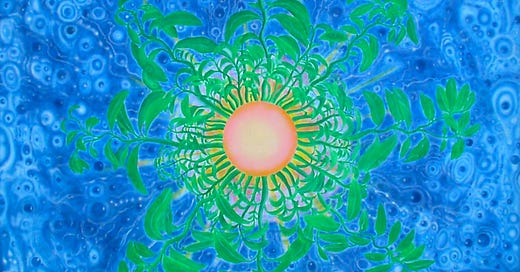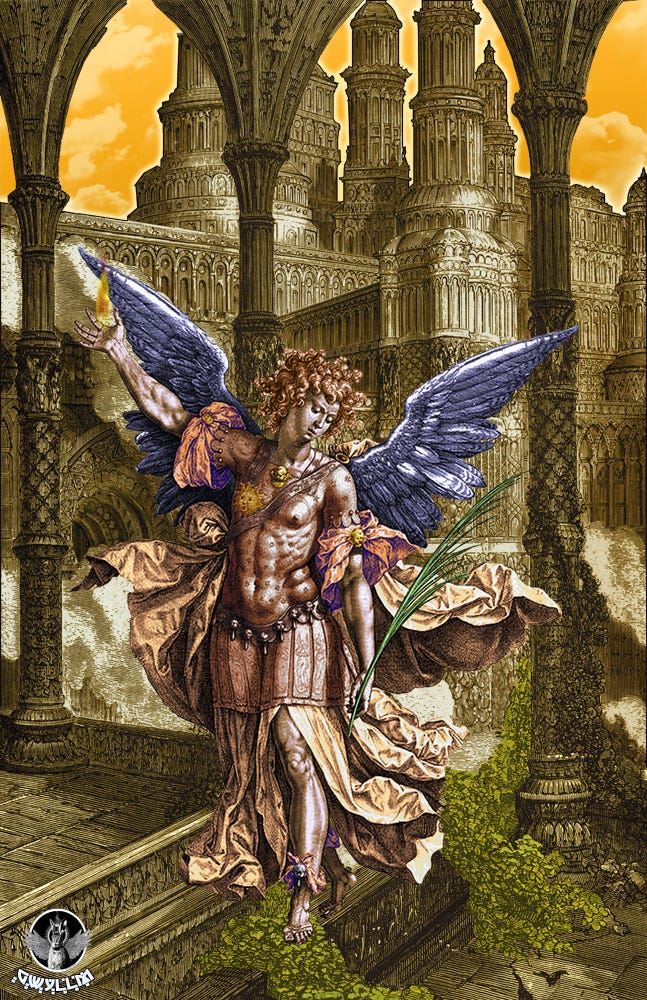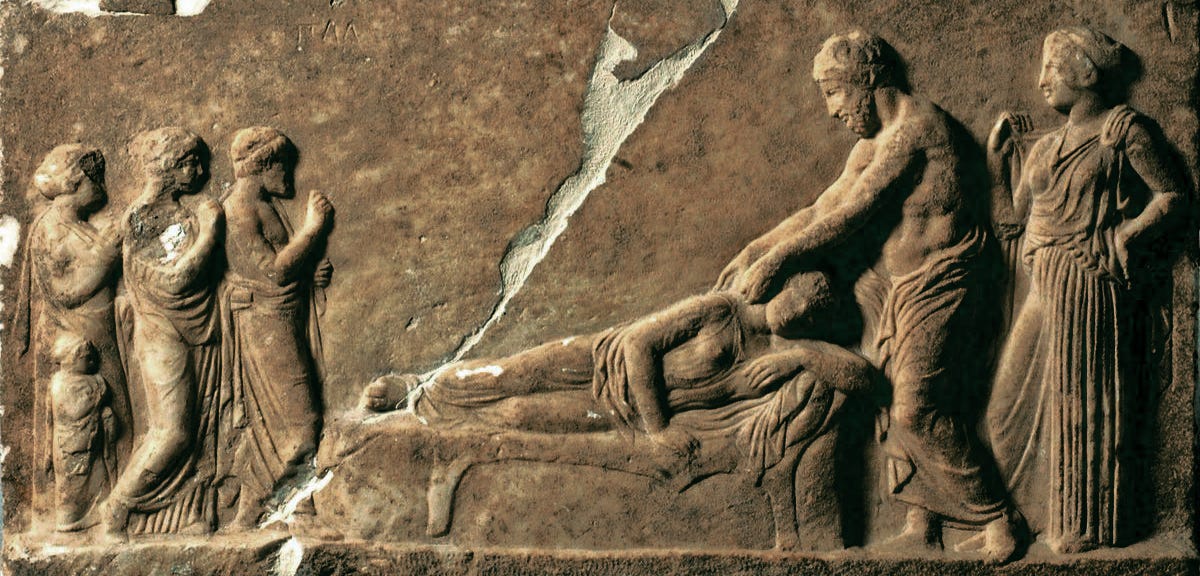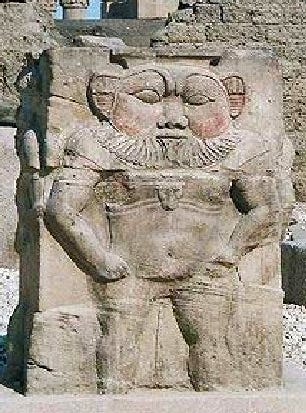Part II is in the works. I hope you enjoy this entry:
“Salvia Dream” - Airbrush/Painted 1999 - Gwyllm
I have been struggling a bit with writing as of late, I have several entries, not complete. I thought I would go ahead and perhaps converse on a couple of other different topics along the way...
If I haven't mentioned it before I have often used dreams and what comes in dreams to guide my path in this life. Is this unusual? From what I understand it is a time-honoured method of guidance and divination. I recently had a dream that directed me on a creative venture which in time I will reveal but as dreams go, I have found that if you talk too soon about it then nothing comes of the original vision. Perhaps it is a blunting of one's contact with The Muse by having other folks’ consciousness becoming entwined with the project. It is rather hard to say.
The tradition is a long one found throughout various cultures around the globe, from the Celtic Poets with their night long vision quest upon a white bulls hide strewn with rowan berries and on wakening to recite a poem granted during those hours, to become an Ollave … The technique of dream incubation of course goes back beyond Pythagoras and further to Egypt along the way. There have been remnants found of Dream Temples in Iran, dating from very early periods from the Zoroastrians as well. I am sure that the practice goes back to the Paleolithic if not further at least.
Finding your path or using precognition revealed through dreams is known as Oneiromancy. I have used various methods over the years. I had a series of dreams that led me to our Marriage, traversing some 6000 miles from Hawaii to London in the process. I believe I have written about it; the memory is ever present. The gifts that dreams can bring…
Oneiromancy, the divination of dreams has long been a fascination, and a tool in my world. One of the other methods I have used over the years in conjunction with Oneiromancy is Botanomancy, divination through plants. This is the ingestion of plants to reach an altered state where divination is possible.
This simple take on the technique of combining disciplines goes like this:
Ingestion of said plant material whilst lying down in bed. Visions may occur before falling asleep, or not.
Dreamtime. The interaction of dreams with the plant.
Vision Resolution. Upon waking it is advised to write down immediately what was revealed in the session. The initial state will usually fade quickly.
Although I haven't used this technique in many years it works quite well. One has to be aware that regardless of how soon the plant apparently wears off it still has a residual effect lasting up to 24 hours… not that one is necessarily in the state/high, but that revelations can keep surfacing. Fascinating stuff.
I’ve contemplated returning to this practice in recent times. It is very efficient and have had great results with it over the years. I have stayed mainly though with just unaided dream work as there's less preparation along the way.
Your speed may vary. This is not a path for everyone. It is known as part of “The Poison Path”, caution should be exercised when going this way.
Thanks to Cliff Berns for this: This fits nicely into the theme of this substack…
____________
From 10/9/20
Angelic - Gwyllm
So, In the Dream Time. It has been rich as of late.
The other night, I was able (in the dream) to step outside of the dream I was submerged with, and walk around it, examine it, interact with it as if it were a 3 (or more) dimensional object.
Consciousness as a playground within consciousness.
This was deeply moving, and beguiling.
__________________
Here's an excerpt from a wonderful book “The Temple of Perseus at Panopolis” by Peter Lamborn Wilson that touches on dreaming and its place in the ancient world:
The Dreamy Sleep of Late Antiquity:
Ponder well, son, the mightiest energy of sleep - the opposite to the soul’s [energy], but not inferior to it.
For that just as the soul is motion’s energy, so bodies also cannot live without [the help] of sleep.
For ‘tis the relaxation and the recreation of the jointed limbs; it is also operates within, converting into body the fresh supply of matter that flows in, a portioning to each improper [kind] - the water to the blood, the earth to bones and marrow, the air to nerves and veins, of fire to sight.
Wherefore the body, too, feels keen delight in sleep for is sleep, that brings [this feeling of] delight into activity.
- Hermes
We no longer live in a world that values magic sleep. Even psychoanalysis, which once preserved the notion that dreams revealed truths (of the subconscious, not the future) has ended in the trash heap of history, to be replaced by the anti-depressants and television. Sleep with us post-moderns is simply a blank space between work and death. It has no meaning, no inherent value: and the night is lit up with neon to the spell even the lost memory that's once supernatural powers.
For the ancients, even into Late Antiquity, however, sleep offered revelations; just as night was illuminated by the living fires of the stars (which were themselves gods, and arranged in constellations of living myth), so sleep was lit by the inner illumination of dreams. The light by which we see our dreams must be a spiritual light, and inner light, the Moon of the Imagination. Everyone at some time has experienced “veridical” dreams, especially sharp, detailed, colored, memorable, packed with apparent significance. Surely there must exist techniques for inducing such dreams; secrets that even now are remembered in India and Tibet perhaps. One should be able to incubate dreams like eggs, till they hatch out into inspirations, cures for illnesses, messages from spirits, solutions to problems, songs, visions. Deliberate dreaming.
Isn't there something sleepy, something dreamy, about Late Antiquity about Egypt in the “decadent” times of the Roman Empire and the twilight of paganism? Anthropologists have noted that some folks sleep more than others. Before the tyranny of clock time (Capitalist Time) dragooned us into our current view of sleep as a therapeutic break from work and shopping, more “primitive” people took frequent naps, and spent some time awake at midnight, by the fire, remembering their dreams to each other. Fifth century Panopolis had no electricity, no internal combustion to disturb the sacred darkness in which it was sometimes difficult to tell if you were awake or asleep. A flickering oil lamp was one of the main objects in magic rituals, mirroring the “rapid eye movement” of dreaming sleep.
Dream incubation must have originated with human or even pre-human consciousness. It must be universal a primordial “shamanic technique of ecstasy” or getting-outside-the-body, travel to the realm of spirits. In the Indo-European traditions it appears in very early archaeological traces such as the Soma /Haoma temples of the Bactria/Margiana region (excavated by the Russian Sarianidi), where rows of tiny cells were provided for the sleepers. They would be dosed with Soma (probably a mixture of cannabis with ephedra and opium) and sent off to dream (or stay put and have the visions in the dark?); in the morning the priest would interpret the dream and offer advice. Or so it appears to me.
I base this scenario not only on the archeology but also on later Indo-European versions of incubation. In ancient Greece the temple of Asclepius the Healer-God and his pet Snake provided this service along with medical prescription based on the one’s dream. In ancient Ireland the apprentice bard had to spend time alone in a pitch dark cell with a cowhide of the door to block all light, his body wrapped (they say) in a fresh cowhide, and emerge in the morning with a complete poem. There are hints of such practices in the Rig Veda, which speaks of the poetic meters as the tracks of the cows of the Sun, or as cows, or as actual divinities (especially Gayatri, the basic Vedic meter).
Thus, the incubated dream could act as initiation, or at least as a “heuristic device” a source of knowledge. In a properly induced veridical dream one meets the gods; even Lucretius the materialist, in De Rerum Natura, admits as much.
The Stoics, like Cicero and is commentator Macrobius (Commentary on Cicero's Somnium Scipionis- 5th cen. ADE) were mad keen on dreaming, as were the Orphics and the Hermeticist. Post-Hellenistic Egypt was awash in dreams, from the visions of neoplatonist and theurgists to the humble dreams of pilgrims to such major incubation shrines as Menouthis, a beach resort and temple near Alexandria, where Isis was still sending dreams to her worshipers in the fifth century (and after she was ousted by the Christians a pair of saints to go to the jobs of incubation).
The very popular Greco-Egyptian gods Bes (a comic dwarf who became a cosmic divinity) and Serapis are also mentioned by ancient sources in connection with divinatory dreams.
Serapis had originally been made up by a committee of Greek and Egyptian intellectuals in the 3rd cen. BCE, including the Egyptian priest Manetho, author the Chronology of the Pharaohs. A combination of Zeus, Osiris, possibly the sacred bull Apis, and Hades or Pluto (i.e., Set, the dark brother of Osiris) Serapis had a major temple in Alexandria, the Serapeum, near the Library. The Christians destroyed it in 389 ADE. Serapis resembled Zeus, a powerful mature man with flowing hair and beard. He was meant to bring the Egyptians and Greeks together in a Mystery, a deliberate syncresis of the two traditions. This idea itself seems to me the product of a dream. Oneiromancy becomes oneroromanticism - a cult of the deliberate dream that looked back to an Imaginal Past. Sacred drowsiness.
(Peter Lamborn Wilson & I corresponded for several years before he passed. He gave me permission to use his works as I see fit. I miss the man.)
And to finalize this entry… Death and Sleep have often been compared.
Sent to me by my dear friend Michael (friends for 55 years!):
Thank you for reading, there will be a follow up Substack.
Bright Blessings & Revelatory Dreams,
Gwyllm










To stay vested in the humanity, to express our love for the world and all of our companions in this journey. These are the goals I have now days Karin.
Great post. This subject and the traditions and mythologies that you present (and ponder) here are right up my alley and a huge interest (as well as practice) of mine. Many of my writings have come from nocturnal dreams or other waking vision quests. I mentioned in the comment section of another post just last week that Borges (but one of my heroes) saw writing as wakeful dreaming...not an original thought and he is/was not the only one. This is great and an important post. Practices known of (but forgotton or nearly extinct) since antiguity must be preserved, employed, and further explored.